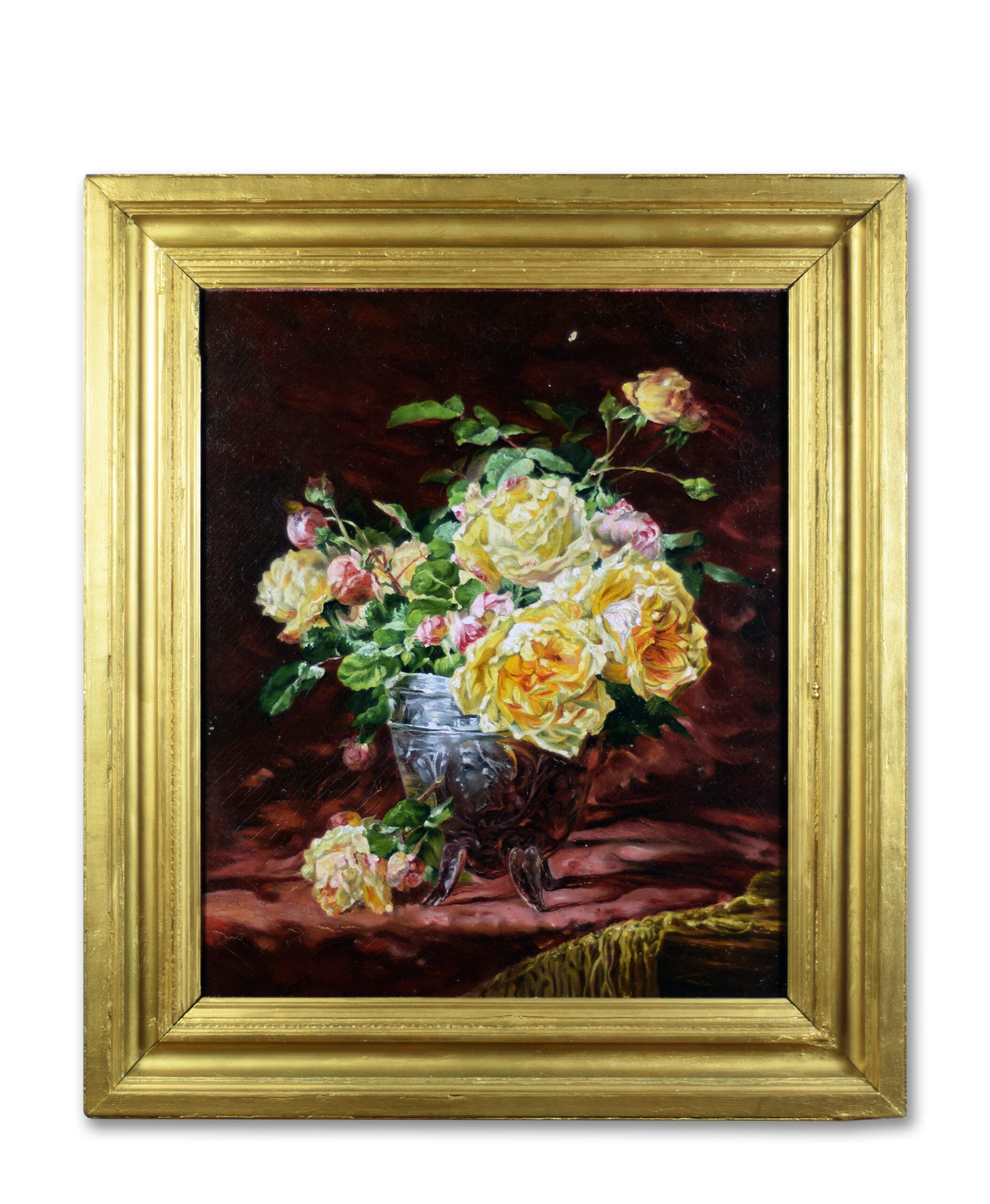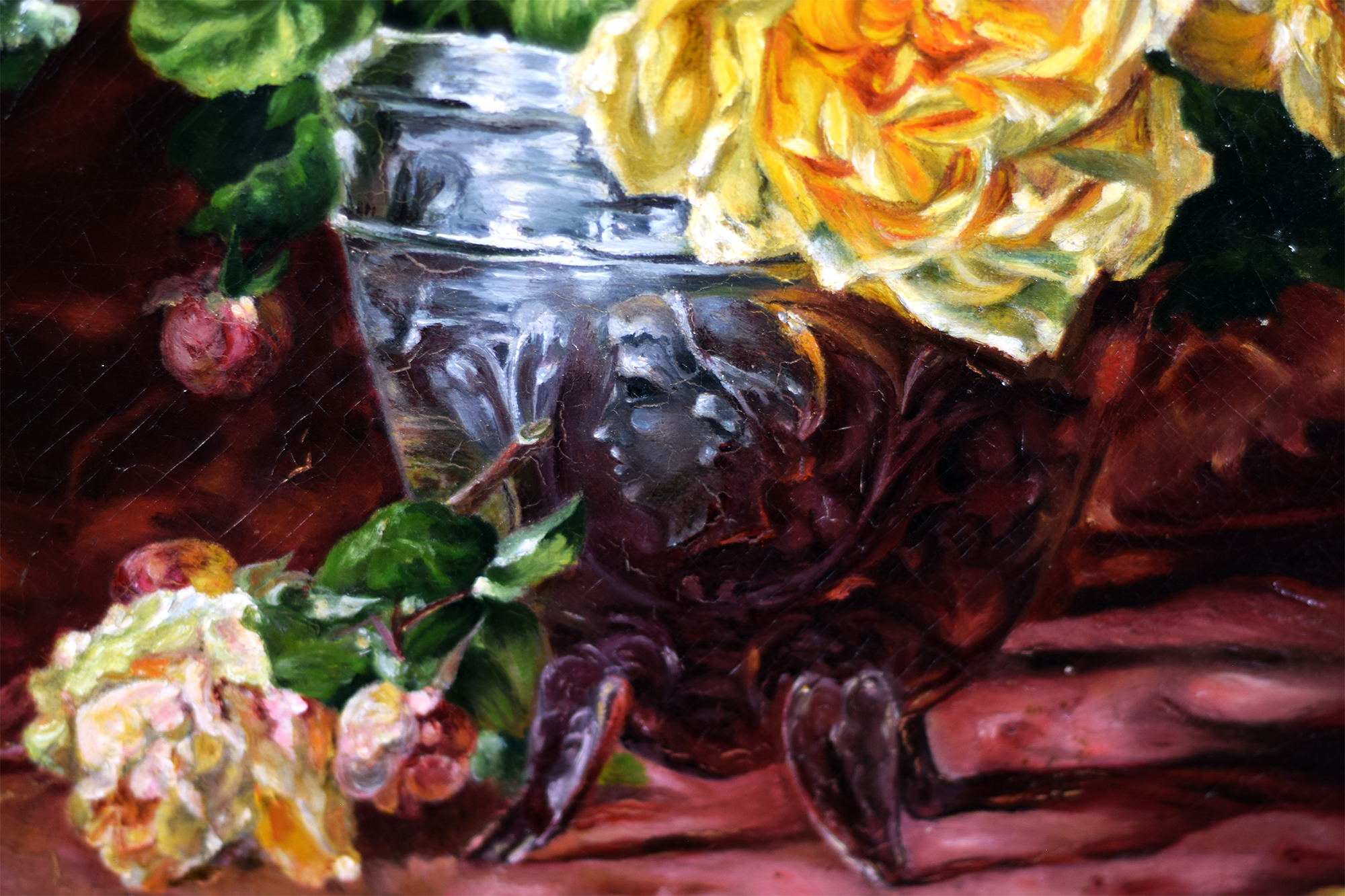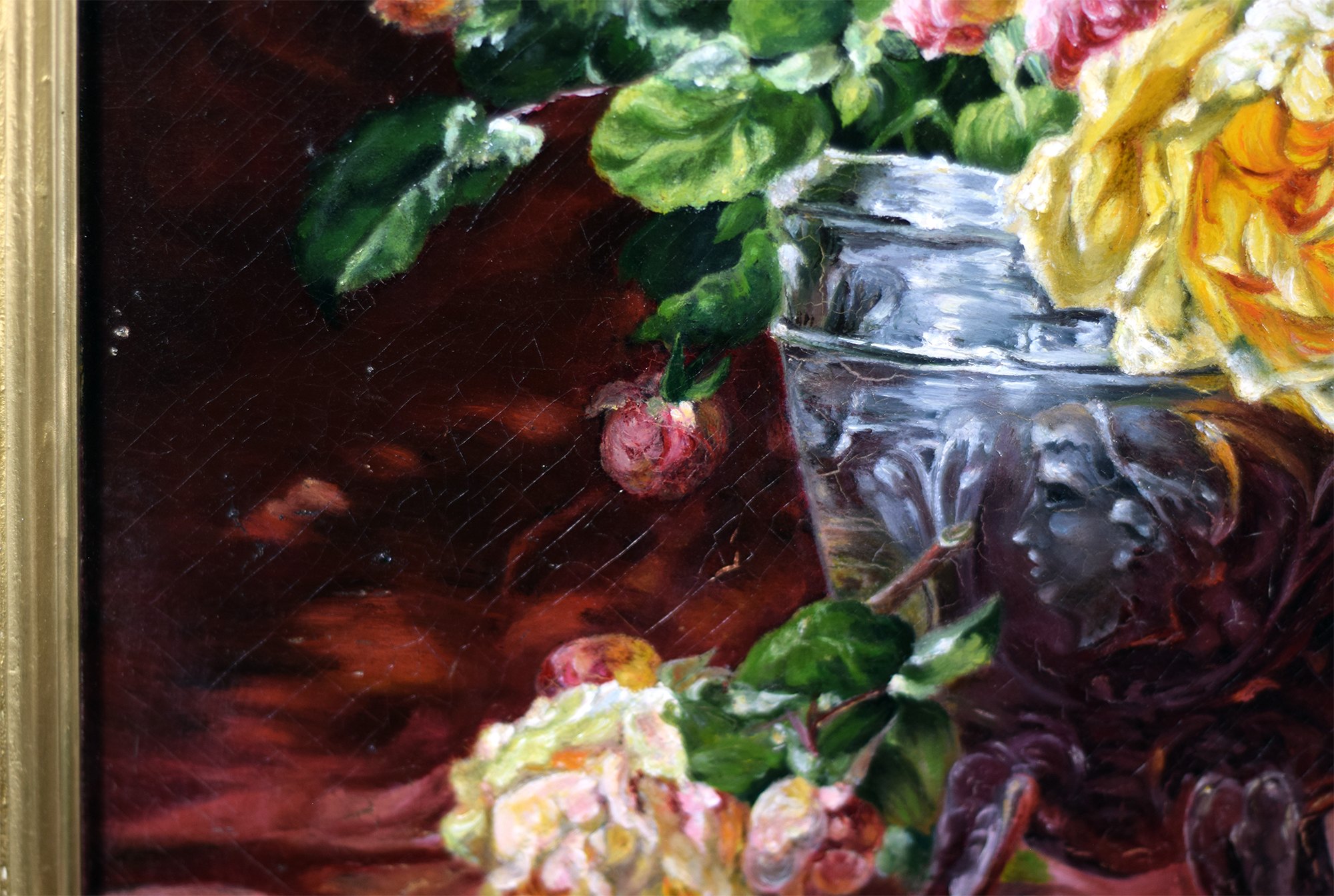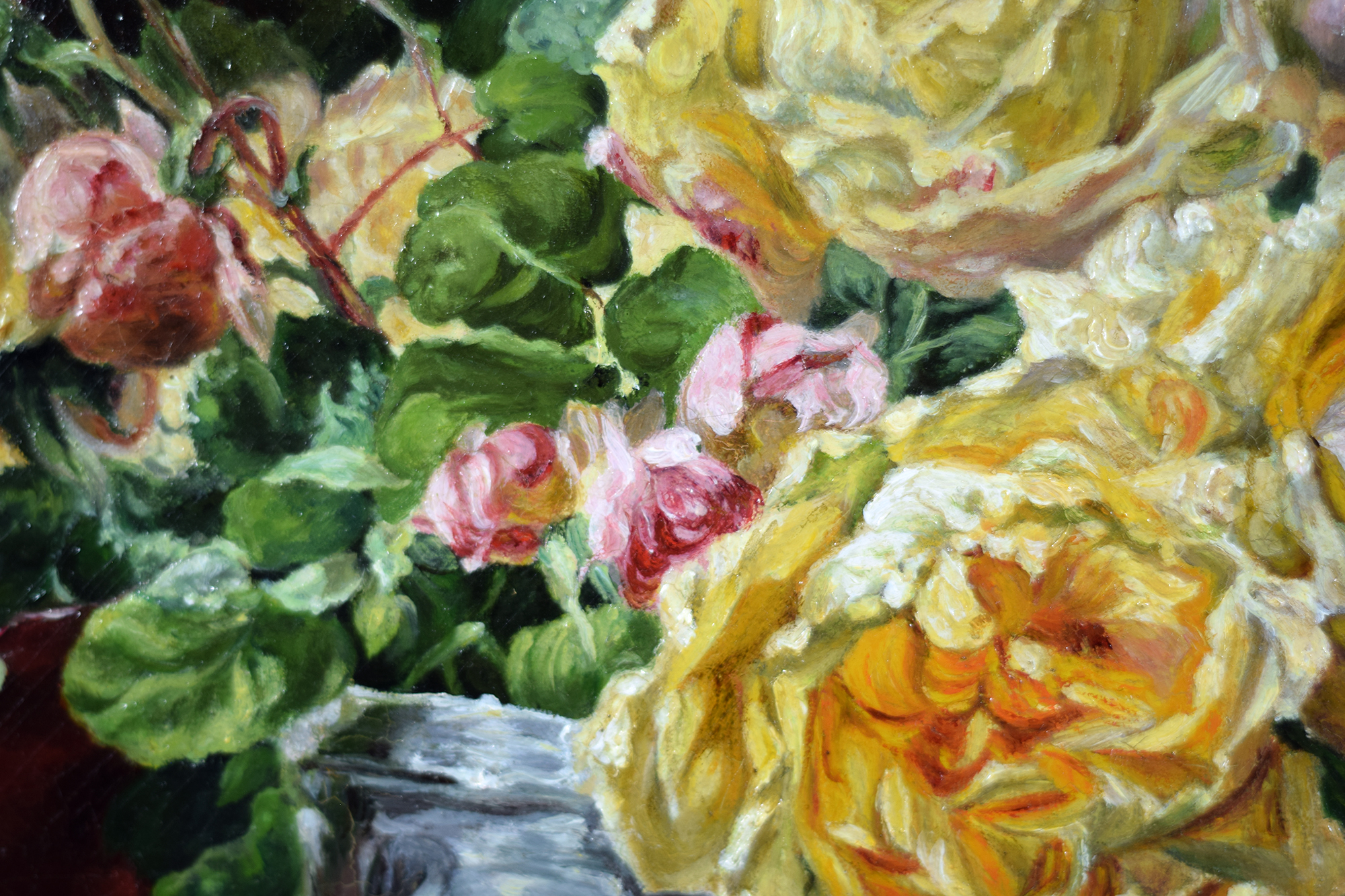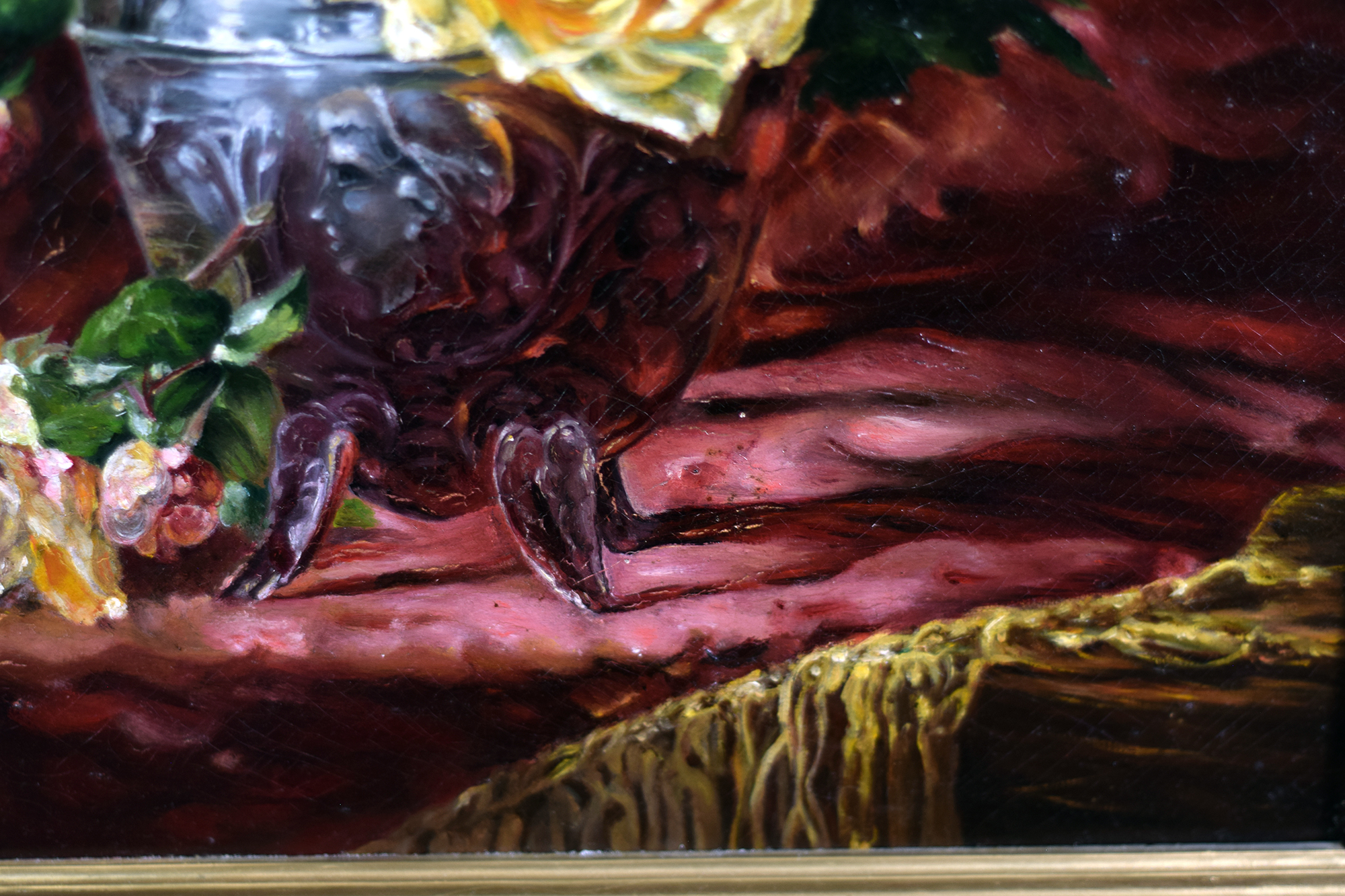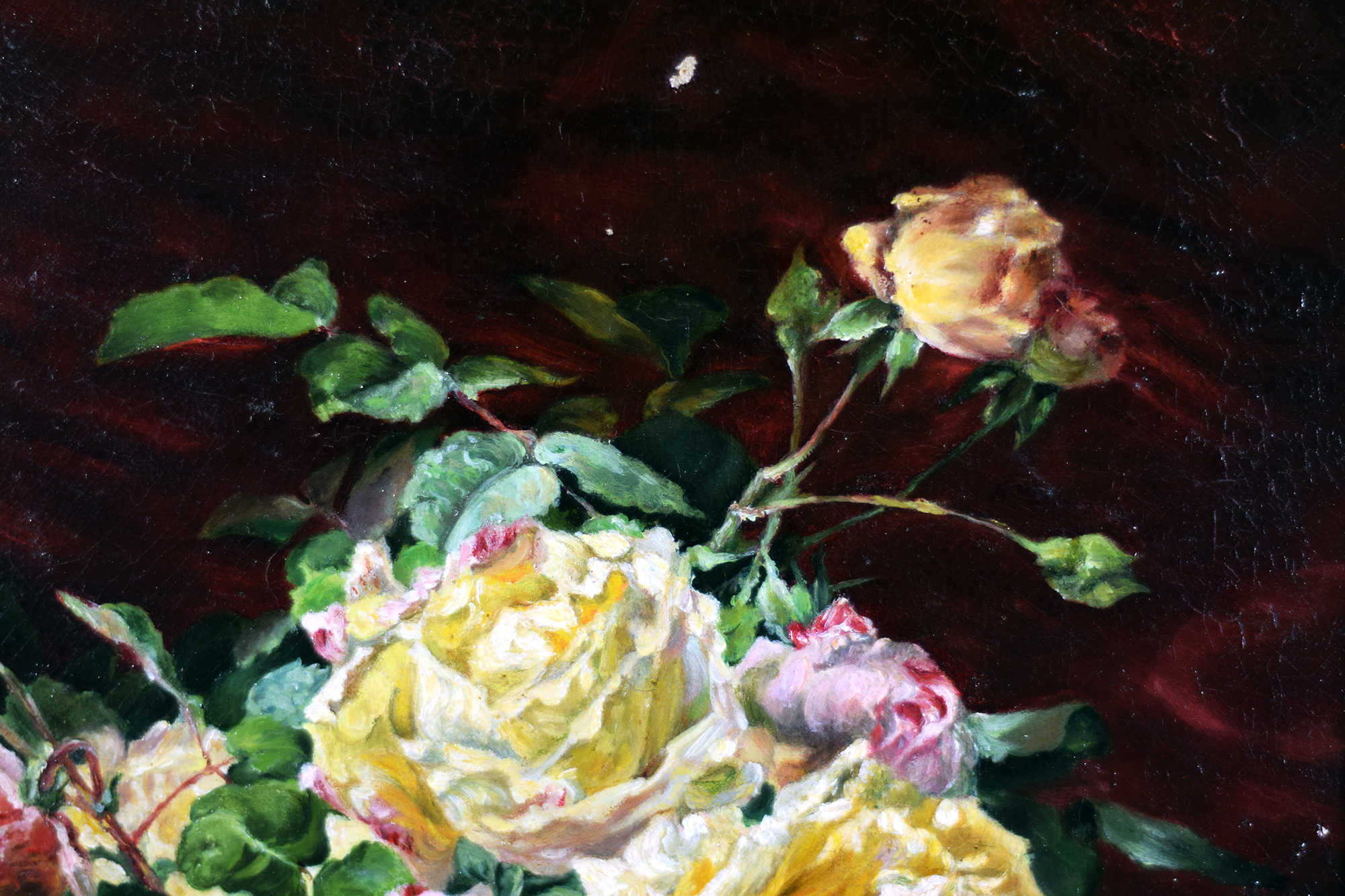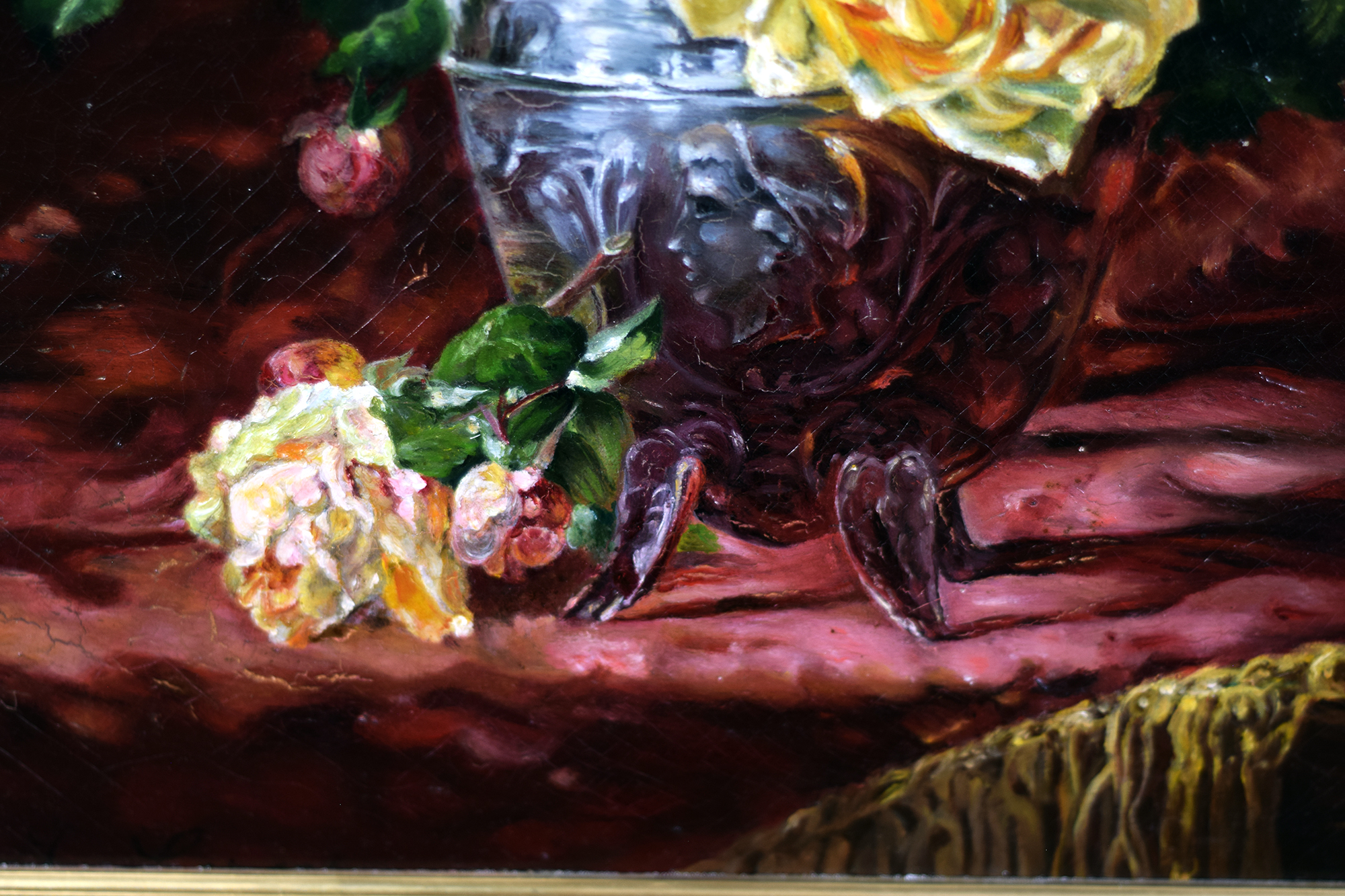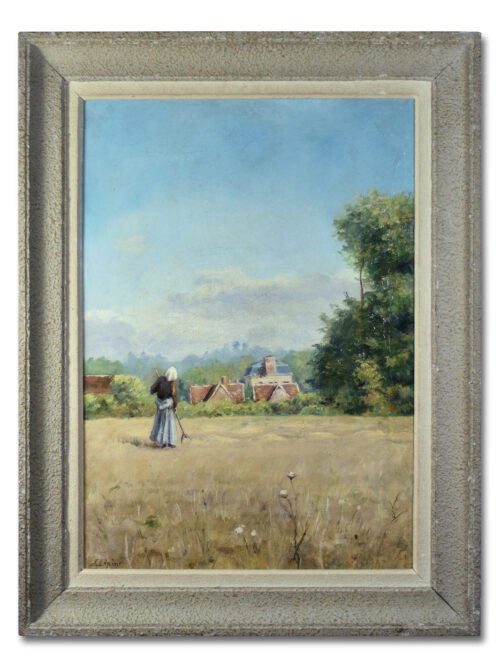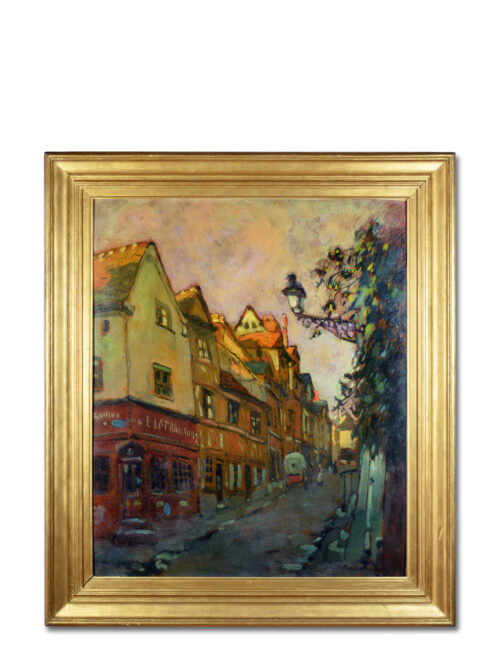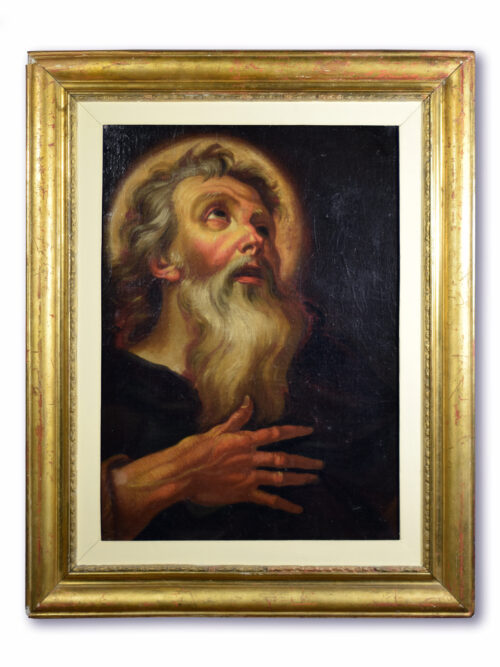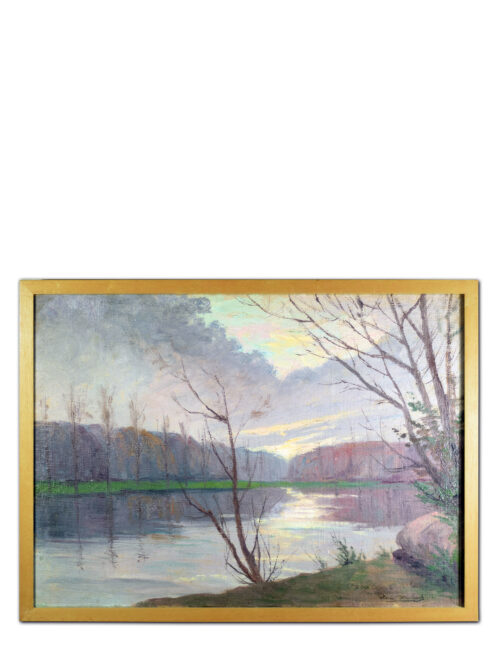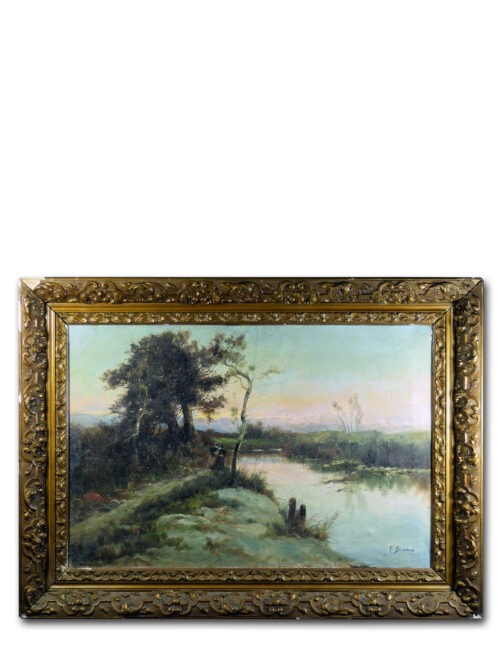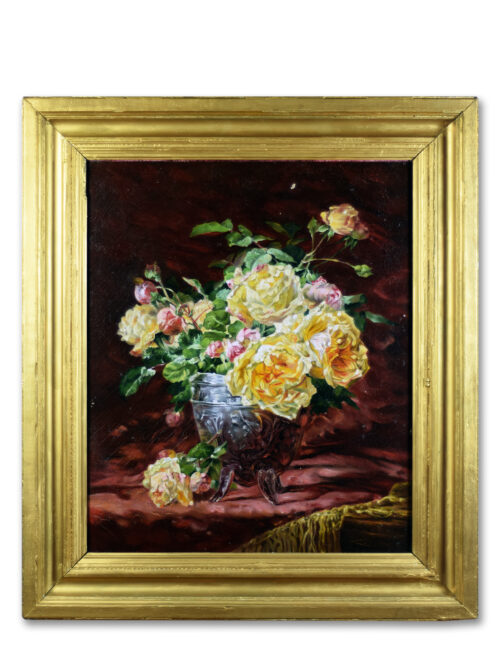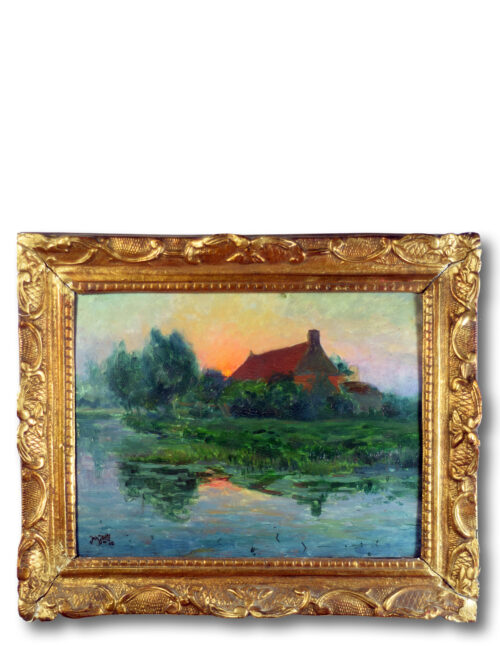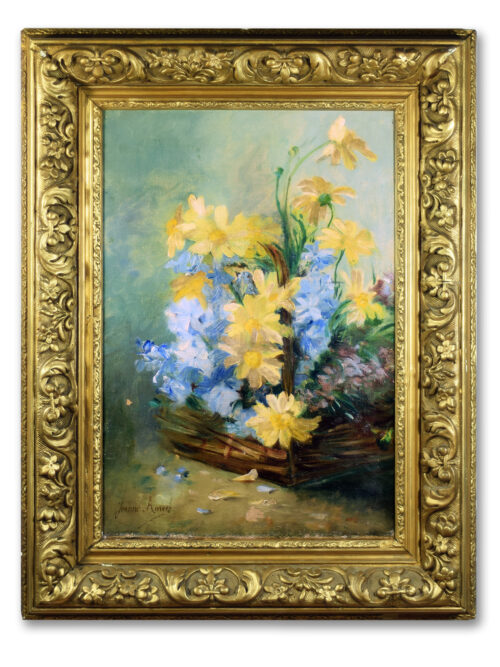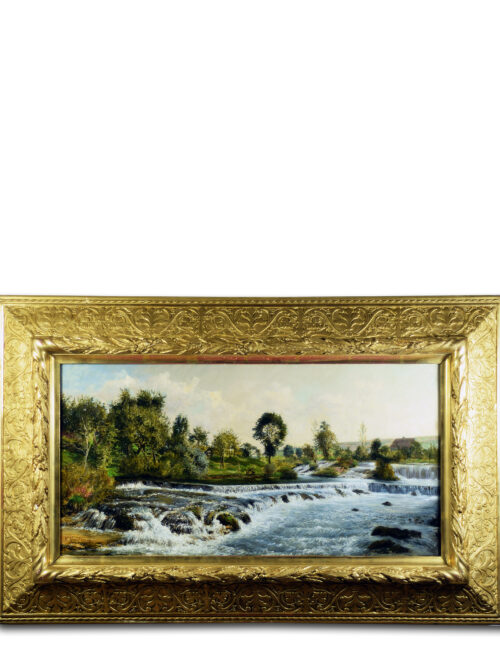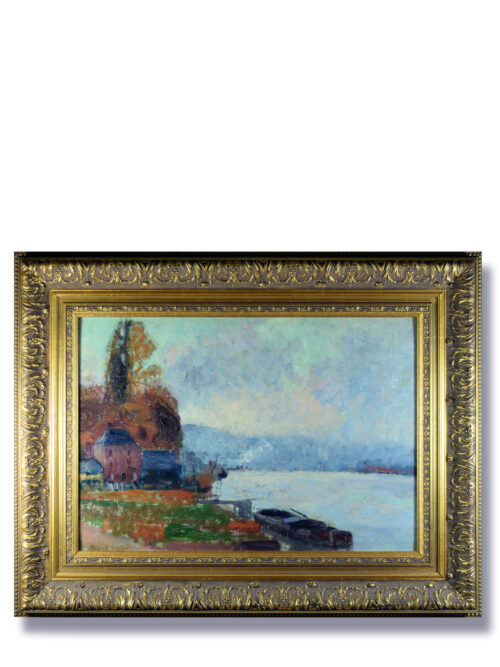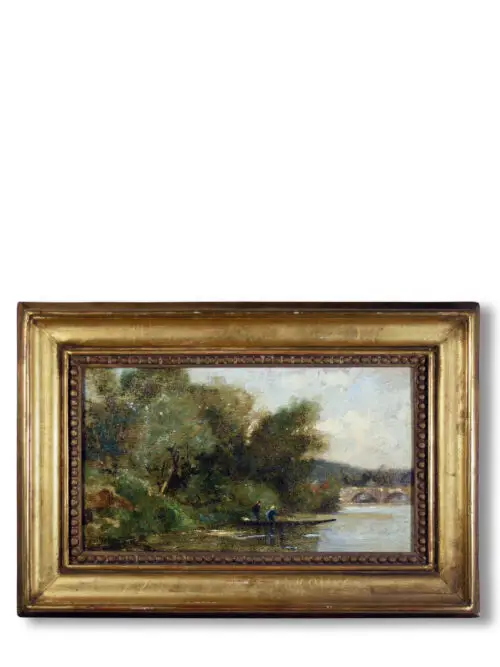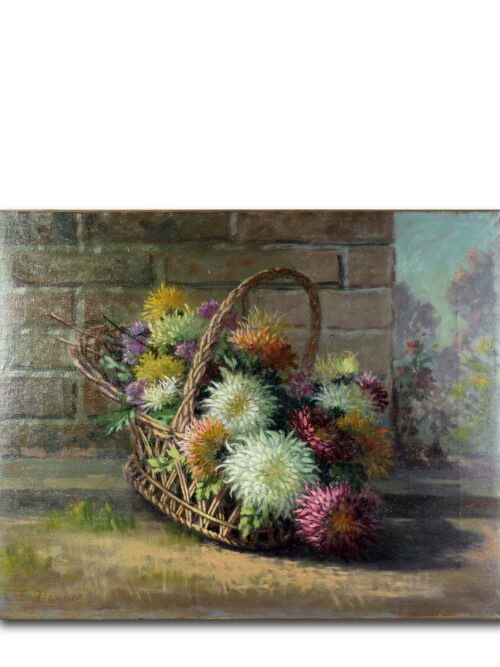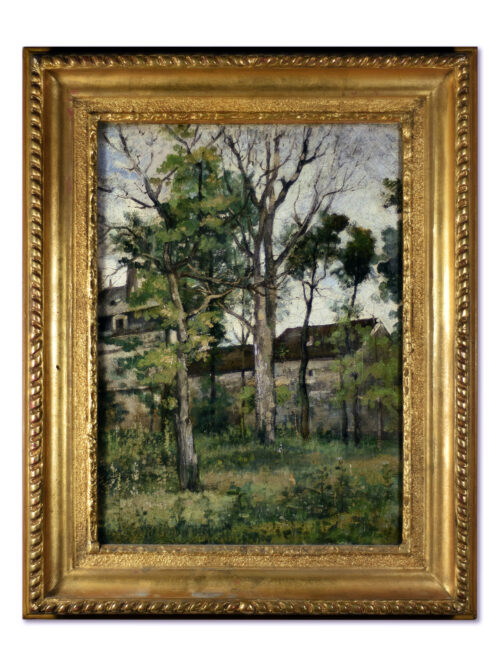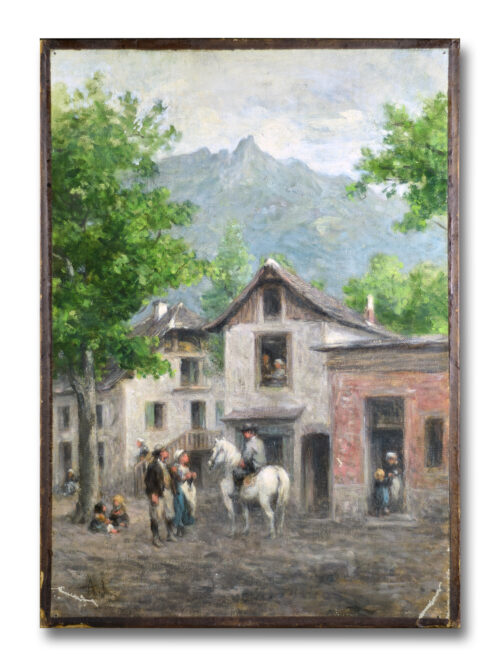Antique French Painting by Jules Leroy (1833-1865) – Still Life with White and Yellow Roses
By Jules Leroy (1833-1865)
3.200€
USD US DOLLAR
Country of origin:
France
Medium:
Oil on wood
Signed:
Signed lower left
Dated:
19th Century
Condition:
Very good original condition
Size:
111.06" x 6.3" (28 cm x 16 cm)
Provenance:
Private french collection
Other Artworks
-
CITYSCAPES
Stanislas Lépine – Bucolic Landscape with Haymaker
4.270€This charming antique oil painting by renowned French artist Stanislas Lépine (1835-1892) depicts a peaceful rural scene with a haymaker at work in a sunlit field. Restored by a professional conservator, this piece embodies Lépine’s early work, showcasing his masterful portrayal of light and nature.
Oil on canvas
4.270€
View Price
-
CITYSCAPES
Robert Antoine Pinchon (1886-1943) – French Street Scene in Rouen – Sunset or Sunrise Atmosphere
46.000€An original oil painting by Robert Antoine Pinchon, a renowned French Post-Impressionist. This exquisite piece captures a romantic street scene in Rouen with vibrant colors reflecting either a sunrise or sunset. Signed and in excellent condition.
1924
oil on panels
46.000€
View Price
-
Oil
18th Century School Painting – Unattributed French or Italian Oil on Canvas
2.400€18th Century French or Italian School Painting – Unsigned, this oil on canvas features a mystical scene with a saint and a golden halo, showcasing dramatic chiaroscuro and intricate details. The painting is in excellent condition, re-stretched, and comes from a private French collection. Further research could reveal the artist’s identity.
1750
Oil on canvas
2.400€
View Price
-
LANDSCAPES
Antique Sunrise Landscape Painting by Louis Blanchard Florane (1869-1939) – Oil on Canvas
1.200€Antique oil painting by Louis Blanchard (Florane) (1869-1939), featuring a vibrant sunrise landscape by a river. The painting showcases early morning colors reflected in calm water, with numerous trees and a beautifully captured atmosphere. Signed and dedicated to Charles Lemoine, this piece is in excellent condition along with its frame.
Oil on canvas
1.200€
View Price
-
LANDSCAPES
Antique Sunset Landscape Painting by Francisco Blasco (1864-?) – Oil on Canvas
600€Antique oil painting by Francisco Blasco (1864-?), depicting a tranquil sunset scene with two figures by the water’s edge. The painting features a calm, reflective water surface, lush vegetation, and a serene atmosphere. It is in need of some restoration but remains a beautiful example of Blasco’s work. Signed in the bottom right corner, this piece is perfect for collectors of antique landscapes.
Oil on canvas
600€
View Price
-
FLORAL
Antique French Painting by Jules Leroy (1833-1865) – Still Life with White and Yellow Roses
3.200€Antique French still life painting by Jules Leroy (1833-1865), showcasing a bouquet of white and yellow roses in a pewter pitcher, set against a deep red background. Signed and in good condition.
Oil on canvas
3.200€
View Price
-
LANDSCAPES
Antique Painting by Jules Joets – Sunset Over a Tranquil Waterscape, 1910
2.400€A tranquil waterscape at sunset by Jules Joets. This 1910 oil on wood painting features a warm, colorful sky reflecting on the water, with calm vegetation and water lilies. Signed and dated by the artist in the lower left corner, it is in good condition.
1910
oil on panels
2.400€
View Price
-
FLORAL
Antique French Painting by Jeanne Amen – Basket of Yellow and Blue Flowers
1.800€An antique painting by Jeanne Amen, featuring a basket of luminous yellow and blue flowers. This oil on canvas piece is signed by the artist and showcases her unique brushwork. The painting is in good condition, with minor paint loss in some areas. Jeanne Amen is an increasingly recognized female artist from the 19th century.
Oil on canvas
1.800€
View Price
-
LANDSCAPES
Antique Painting by Victor Guillemin – Bucolic Landscape of the Doubs River (1831-1906)
8.600€Original 19th-century painting by Victor Guillemin, depicting the Doubs River in a lush, bucolic landscape. A fine example of Guillemin’s mastery in capturing the natural beauty of Franche-Comté.
Oil on canvas
8.600€
View Price
-
LANDSCAPES
Antique Painting by Narcisse Guilbert (1878-1942) – The Seine at Bordes with Rich Skies and Moored Boat
5.200€Original early 20th-century painting by Narcisse Guilbert, depicting the Seine at Bordes with rich, vibrant skies and a moored boat. A fine example of the École de Rouen’s influence on French landscape painting.
oil on canvas mounted panel
5.200€
View Price
-
LANDSCAPES
Antique French Painting by Paul Désiré Trouillebert – River Scene with Fishermen in Bucolic Setting
3.400€Original 19th-century French painting by Paul Désiré Trouillebert, depicting a serene river scene with fishermen and a picturesque bridge. A signed oil on wood that embodies the tranquility of rural France.
oil on panels
3.400€
View Price
-
FLORAL
Antique French Painting by Émile Boulard – Vibrant Basket of Flowers in a Rustic Countryside Setting
1.600€Original 19th-century French painting by Émile Boulard, depicting a vibrant basket of flowers set in a serene countryside setting. A must-have for art collectors seeking authentic pieces of French history.
Oil on canvas
1.600€
View Price
-
CITYSCAPES
Houses in the woods by Stanislas Lépine
14.800€Explore Stanislas Lépine’s elegant depiction of bourgeois apartments nestled in a serene natural setting. A perfect blend of 19th-century urban sophistication and tranquil charm.
oil on canvas - re-lined
14.800€
View Price
-
CITYSCAPES
Daily scene in an Alpine village by Albert Lugardon
370€This is the original Albert Lugardon’s Daily scene in an Alpine village painting, dated back to the 19th.
1890
Oil on panel
370€
View Price
-
4444
vv
5.291€
View Price
-
2006
Oil on Canvas
5.291€
View Price
Discover an exquisite antique painting by the French artist Jules Leroy (1833-1865). This beautifully composed still life features a bouquet of delicate white and yellow roses arranged in a pewter pitcher, intricately adorned with a bust figure. The rich, deep red background highlights the fine details of the petals, while the vibrant green leaves add a refreshing contrast. The pitcher is set on a luxurious deep red cloth, accented with golden threads, further enhancing the elegance of the scene. This oil on canvas is signed by Jules Leroy in the lower left corner and is in good overall condition, making it a remarkable piece for collectors of fine art.
Artwork Details:
- Artist: Jules Leroy (1833-1865)
- Title: Still Life with White and Yellow Roses
- Medium: Oil on canvas
- Period: Mid-19th Century
- Signature: Signed in the lower left corner
- Condition: Good overall condition
- Dimensions: 18,31 inches x 14,96 inches – 46.5 x 38 cm
with frame 22,83 inches x 19,69 inches – 58 x 50 cm
About Jules Leroy:
Jules Leroy (1833-1865) was a talented French painter known for his detailed and emotive still life compositions. Born in France, Leroy was active during the mid-19th century and became renowned for his ability to bring life to inanimate objects, particularly in his floral arrangements. His work is characterized by a keen attention to detail, rich color palettes, and a deep understanding of light and shadow. Though his life was tragically short, Leroy left behind a body of work that continues to be appreciated by art collectors and enthusiasts worldwide.
Artist biography
VIEW FULL ARTIST PROFILE
Stanislas Lépine (1835-1892) was a French painter best known for his exquisite landscapes and urban scenes, particularly those depicting Paris. Born in Caen, France, Lépine moved to Paris in his youth, where he was deeply influenced by the city’s vibrant art scene. Although often associated with the Impressionists, Lépine’s work stands out for its unique focus on serene and understated scenes, characterized by a delicate use of light and a soft palette.
Lépine studied under Camille Corot, one of the great landscape painters of the 19th century, which helped him refine his attention to natural light and detail. Unlike many of his contemporaries, Lépine preferred quiet, less populated areas of Paris, such as the banks of the Seine, the streets of Montmartre, and views of suburban landscapes. His works often feature tranquil riversides, bridges, and the subtle charm of Parisian life, captured with a gentle and contemplative brushstroke.
Despite his talent, Lépine remained relatively unknown during his lifetime, as he avoided the limelight and commercial success. His dedication to his craft, however, earned him the respect of his peers, and his work is now recognized for its contribution to the transition from traditional landscape painting to the modern techniques of the Impressionists.
Today, Stanislas Lépine’s paintings are held in high esteem and can be found in prestigious collections, including the Musée d’Orsay in Paris and the National Gallery in London. His legacy as a painter of quiet beauty and refined simplicity continues to inspire art lovers around the world.
Stanislas Lépine’s works can be found in several prestigious museums around the world. Here’s a list of some notable museums where his paintings are housed:
Musée d’Orsay, Paris, France
- The Musée d’Orsay holds several of Lépine’s works, showcasing his Parisian landscapes and serene river scenes.
National Gallery, London, United Kingdom
- The National Gallery features Lépine’s works, particularly those depicting the tranquil urban life of Paris.
Musée du Louvre, Paris, France
- Some of Lépine’s pieces can be found in the Musée du Louvre’s collection, highlighting his connection to the Parisian art scene.
Metropolitan Museum of Art, New York, USA
- The Met houses a selection of Lépine’s paintings, reflecting his influence on the broader art movements of his time.
Musée Carnavalet, Paris, France
- Dedicated to the history of Paris, the Musée Carnavalet includes Lépine’s works, capturing the essence of 19th-century Paris.
Petit Palais, Paris, France
- The Petit Palais displays some of Lépine’s works, focusing on his contribution to the depiction of Parisian life.
Museum of Fine Arts, Boston, USA
- The Museum of Fine Arts in Boston also holds examples of Lépine’s serene urban and rural landscapes.

